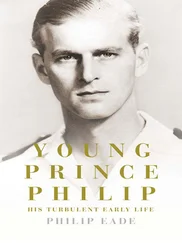Finally, to family and friends. Whereas in a second book family and friends become part of a list, unusual to this story was the extended period of serious illness launched them into a strategic role. My parents, Pamela and Peter Blood, have always supported my work and career. Also to my relatives Jan, Lauren, Colin and Dr. Alexander Ford. My dearest friend for more than forty years, Manny Phelps passed away in 2015. After major surgery and disability, he devised the means to restore my writing that led to this book. We shared an interest in the Luftwaffe and I would hope this meets with his high standards of accuracy and detail. Manny’s family of Maria, Ricky, Danielle and Nicole remain precious to me. Dr. Barry Rosenthal (Baltimore) is a dear friend and supported this project with advanced computers. Harry Wise (London taxi driver) and Bradley J. Hodgson (gunsmith) spent hours explaining gun-making, drive-hunting, and that special relationship between rifles and marksmanship. All my friends mentioned in my first book were also part of the progress to this. Thank you to German doctors and medical staff who have worked incredibly hard in my interest over the last fourteen years.
Table 1: Bach-Zelewski’s travel itinerary
Table 2: fluctuations in manpower levels
Table 3: LWSB, death by shooting, 14 August 1942
Table 4: LWSB, death by hanging, 9 September 1942
Table 5: LWSB, hanging 22 September 1942
Table 6: LWSB, death by hanging, October 1942
Table 7: Forest communities and the results of deportation
Table 8: Settled out of the forest.
Table 9: LWSB, death by hanging, 22 December 1942
Table 10: executions through hanging, 20 November 1942
Table 11: LWSB, death by hanging, February 1943
Table 12: LWSB death sentences on 24 February 1943
Table 13: final deployment of the LWSB on 5 March 1943
Table 14: Herbst’s amended body count
Table 15: JSKB expenditures—fuel and ammunition
Table 16: JSKB roster, 6 March 1943
Table 17: JSKB muster March–October 1943
Table 18: LW Signals Regiment 1 schedule
Table 19: JSKB muster October 1943 to August 1944
Diagram 1: Reichsforstamt organisation and the Jagdamt (1936).
Diagram 2: the four categories of reported incidents
Diagram 3: age range of sixth company officers and NCOs
Diagram 4: age profile of sixth compan
Diagram 5: Original branch of Service with transfers
Diagram 6: Personnel assigned from Flak regiments
Diagram 7: LWSB/JSKB casualties
Diagram 8: cause of fatal wounds
Map 1: Poland divided, Nazi occupation zones in Poland, Soviet Russia and the Ukraine.
Map 2: Bezirk Bialystok circa 1944.
Digital Map 3: Luftwaffen Karte des Urwaldes Bialowies.
GIS Map 4: Police Battalion 322—the village deportations 25 July–15 August 1941
GIS Map 5: the Kobylinski deployment
GIS Map 6: LWSB strongpoints—6 August 1942
GIS Map 7: before the arrival of Fourth Company—10 October 1942
GIS Map 8: after the arrival of Fourth Company—2 November 1942
GIS Map 9: the arrival of Fifth and Sixth companies—19 November 1942
GIS Map 10: the positions of Soviet partisans killed by LWSB
GIS Map 11: deportations—comparison of summer 1941 and autumn/winter 1942
GIS Map 12: the total distribution of hideouts discovered by the LWSB
GIS Map 13: locations of Jews killed by the LWSB
GIS Map 14: The Final Deployment—5 March 1943
GIS Map 15: JSKB deployment—6 March 1943
GIS Map 16: Luftwaffe signals network and the German frontier 1943–1944
GIS Map 17: JSKB hunting patrols—March to October 1943
GIS Map 18: destruction of Jagdkommando Marteck
GIS Map 19: the Nönning Judenjagd
GIS Map 20: Unternehmen Vatertag—3 June 1943
GIS Map 21: JSKB second phase north/south final deployment
GIS Map 22: Plan for Unternehmen Paul, 28–29 May 1944
Image 1: left to right, Oberforstmeister Walter Frevert Rominten, Göring in his capacity as Reichsjägermeister and Oberstjägermeister Ulrich Scherping.
Image 2: Senior Luftwaffe and state foresters in the lounge area in Rominten. A painting of a European Bison is hung on the far wall.
Image 3: European Bison in Białowieźa.
Image 4: Reichsmarschall Göring, Lw.Generalmajor Adolf Galland, Lw.Generaloberst Bruno Loerzer and Reichminister Albert Speer, August 1943.
Image 5: Bernd von Brauchitsch in his cell in Nuremberg prison 1946.
Image 6: Preparation for a diplomatic function at Rominten. Note the Nordic runes on the picture rail under the ceiling.
Image 7: Sites of memory—Located beside the railway in Zabłotczyzna (2 miles from Narewka), the memorial refers to approximately 500 Jews killed on 5 August 1941. The German records show 282 Jewish men were killed at that place on 15 August 1941.
Image 8: A German Army Ortskommandtur: issuing daily notices and labour assignments.
Image 9: Captured Soviet partisans after interrogation but before execution.
Image 10: Armed trusty and Nazi Collaborator.
Image 11: Białowieźa forest—partisan memorial in the conservation area.
Image 12: Civilian deportations and allocation to work or forced labour duties.
Image 13: Villages destroyed and cattle taken under the Nazi food plan.
Image 14: Luftwaffe troops in company order.
Image 15: Luftwaffe troops in action in the forest.
Image 16: Wounded Luftwaffe troops recovering in a military hospital.
Image 17: Typical strongpoint construction in wood.
Image 18: Reichsjägermeister Göring and his prize— Matador —the ceremony for the dead stag—22 September1942
Image 19: The signals was regarded as the advanced branch of the Luftwaffe. Recruits received a full training schedule equivalent to apprenticeships in industry.
Image 20: Sites of memory—Soviet military cemetery located within Hajnówka town. Engraving reads: Hero of the Soviet Union, Guards Junior Lieutenant Aleksii Vasilevich Florenko. Born 6 February 1922. He died in the fight to liberate Hajnówka region 25 July 1944.
Image 21: Sites of memory—located in the centre of Białowieźa town, the memorial stands on the site where public executions were conducted during the Nazi occupation.
Image 22: Sites of memory—located within the Narewka town limits, the Jewish cemetery survived the Nazi occupation.
Image 23: Sites of memory—located nearby Białowieźa town. They are memorials to the mass killings and destroyed villages in 1942. They stand in the grounds of the former German military cemetery, first constructed during the Imperial German Army occupation in 1915-18.
Image 24: In his position as General of Fighters, Adolf Galland approved and endorsed this anti-Semitic trope in comic form. The connections between hunting, the Luftwaffe and training had reached complete integration.
Image 25: Sites of memory—German dead relocated from Białowieźa cemetery. The search for Siegfried Adams burial place marked by my index finger.
Image 26: Heimatkriegsgebiet - Luftwaffe troops in training building small unit cohesion.
Image 27: Dress uniforms and other duties.
Image 28: The Luftwaffe troops assigned to the LWSB/JSKB were generally young and often reassigned from non-combat branches.
Abbreviations and Glossary
AA: Arolsen Archives, located at: https://collections.arolsen-archives.org/en/ search/
BArch: Bundesarchiv, including BA: Berlin (Lichterfelde); BAK: (Koblenz); BA MA: Bundesarchiv Militärarchiv, (Freiburg); BA-ZNS: Bundesarchiv-Zentralnachweisstelle (formerly in Aachen).
Читать дальше












